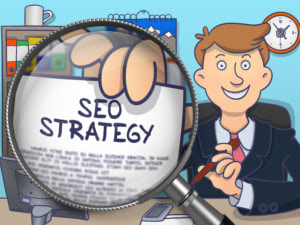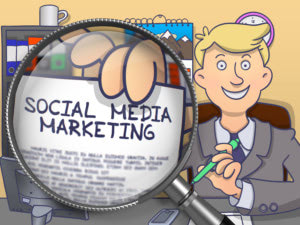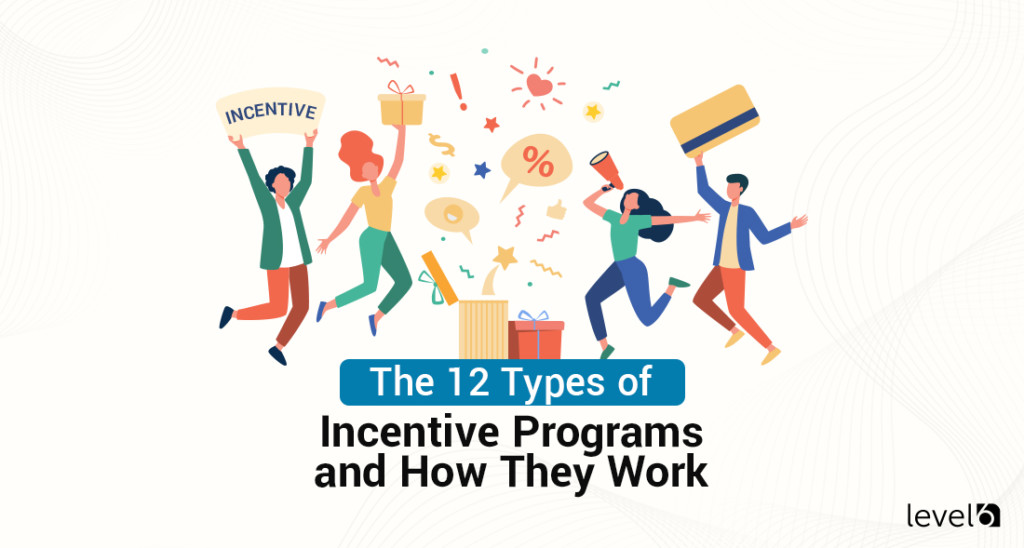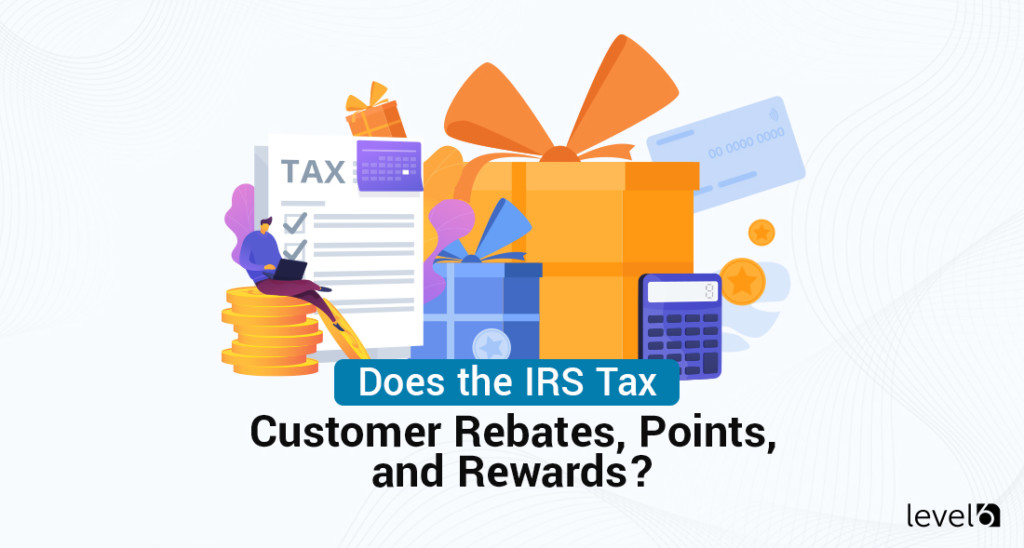It doesn’t matter what aspect of your business or organization you’re talking about. Whether it’s sales, customer service, product development, or any other aspect of your company, one question takes precedence over all others: What’s the ROI? If y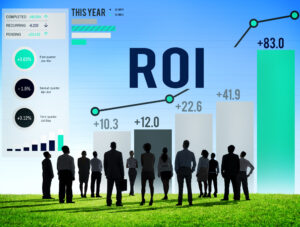
With our clients, we often point to year-over-year proportional improvements in returns as an indicator of an incentive program’s success. As any savvy executive or business owner knows, though, returns alone don’t tell the whole story. Costs are just as important, and you need to take them into account when determining return on investment for any program you implement. This raises some important questions:
– How does the ROI of an incentive program compare to other forms of marketing and sales promotion?
– Are there cost advantages associated with incentives that make them superior to other promotional activities?
In this article, we’ll take a look at some common marketing and sales techniques and see how they measure up to a carefully implemented incentive program so you’ll have a good sense of how you can expect an incentive program to perform comparatively.
Traditional Advertising
John Wanamaker, the early 20th century advertising pioneer, famously said: “Half of the money I spend on advertising is wasted. The trouble is, I don’t know which half.” If you’ve ever tried to run a full-scale traditional advertising campaign, you know exactly what he meant.
Attempting to calculate the return on investment for a traditional ad campaign often seems impossible. Sure, you can come up with a figure that represents how much your total ad spend will be, but trying to determine how much of that advertising leads to actual sales and revenue increases is a bit of a guessing game. Are new sales due to the direct-response TV ads you ran? Are they coming from awareness magazine advertising, or community-based initiatives on public radio? If you run a multi-faceted ad campaign, what portion of new sales are coming from each individual medium?
It’s possible to do some focus group research to determine your ads’ effectiveness on certain segments of the population, but this data still won’t give you much in the way of exact numbers when it comes to actual sales and revenue. Plus, trying to do this sort of research adds a new cost layer to an already expensive proposition. And while many firms use dedicated toll-free numbers and URL’s specific to certain ad campaigns, that type of tracking isn’t foolproof either.
Looking to learn more about an incentive, rebate
or reward program for your business?
Curious about costs?
Try our instant pricing calculator:
Consider these numbers: On average, a national 30-second TV spot costs upwards of $300,000, and the top end during a major event could cost $8 million. Once. That’s right, we’re not talking about something that you’ll put in front of consumers half a dozen times in an hour. This is a 30-second spot, appearing once. If you know anything about advertising, you know that once is as good as “not at all.” An ad in a national magazine could cost $250,000. Full-page ads in national newspapers sometimes go for over $1 million.
Depending on your industry, and especially if you’re in a business-to-business enterprise, you might be inclined to insert ads into trade magazines. That’s fine, but ask yourself something: Are you actually still reading those magazines? When was the last time you saw an ad for something in a trade magazine and made a purchasing decision because of it? At best, this advertising does little more than improve your name recognition. At worst, it’s a complete waste of valuable resources.
Don’t get us wrong, traditional advertising can still be an important part of a robust marketing strategy, particularly if you’re a large organization. But attempting to measure the ROI from a traditional ad campaign is very difficult to do (if not impossible). If you’re looking for a 20% or more year-over-year revenue increase, running a magazine ad probably isn’t the best way to get you there.
Direct Mail
Direct mail offers enables you to measure return on investment more accurately. To be fair, some of your customers may make an additional purchase due to the subliminal effects of direct mail and increased name recognition, and measuring those purchases isn’t something you can easily do. However, including a promotional code on a piece of direct mail allows you draw a direct correlation between your ad spend and the number of leads who actually follow through with a purchase. Whether you’re a car dealership sending out a local promo flyer or an online retailer offering a coupon code for first-time buyers, determining ROI from direct mail is certainly more doable than, say, a television ad.
But it’s important to be realistic about just how expensive direct mail can be. The cost of postage continues to rise—something that we’re all reminded of every time we need to send our annual holiday cards. Sending out thousands of mailers can get expensive in a hurry and, much like television, radio, print, and other traditional advertising, you run the risk of spending tens of thousands of dollars on a campaign… and never seeing a single sale. This sort of thing happens more often than you might think. A poorly targeted direct mail piece can turn into an enormous waste of valuable marketing funds.
To sum up, direct mail does indeed have its place. In the right industry at the right time—and with the right customers, and the right message—direct mail can be effective. If your organization is large enough, direct mail might play a valuable role as part of a larger marketing campaign. In general, though, it’s an expensive (and sometimes risky) way of attempting to increase revenue.
Digital Marketing
Twenty years ago—even a decade ago—many businesses had little to no digital presence. The whole notion of needing to market your business online was something that many small- to medium-sized businesses (SMBs) simply opted to forego. Digital marketing was seen as something that huge companies with big budgets could dedicate both money and employee time to. As a smaller business, you might do this sort of stuff if you had some extra time. Maybe you’d post on social media occasionally or make the occasional website update (one blog post per year, anyone?).
Those days are gone and digital marketing is no longer optional. Virtually every company of every size needs a digital presence these days. If you’re running a business, you need to market your organization digitally.
Things are far from rosy in the world of digital marketing, though. When we talk about digital marketing, we’re usually referring to four separate arenas: Paid traffic, including both pay-per-click search ads and display remarketing, search engine optimization (SEO) for organic traffic, email marketing, and social media. Let’s take a look at each of these in turn.
Paid Traffic
Many organizations get excited about the idea of paid traffic and it’s easy to understand why. After all, the idea of measuring ROI with paid traffic is essentially built into the medium itself. If you’re using something like Google AdWords to run paid search or display ads (the latter of which are often called “retargeting ads,” as they pop up to remind you of a website you recently visited), you can track visitor behavior from the time they click on an ad to the moment they make a purchase. This holds a lot of appeal, especially against traditional forms of advertising like television, radio, magazines, and so on.
Unsurprisingly, paid traffic can be expensive: Something like 95% of Google’s revenue[ii] is derived from its paid advertising fees. Large businesses regularly spend upwards of $50 million per year[iii] on AdWords campaigns, and even small businesses can spend $9,000 to $10,000 a month on average. That’s over $100,000 per year in ad spend.
Paid traffic isn’t just costly because of the fees assessed by Google, either. Particularly if you’re a larger organization, running an effective AdWords campaign means connecting with a trained professional who can bring paid search expertise to the table. Believe us, you don’t want to throw $10,000 or more per month at AdWords if you’re not familiar with the platform. But these services also add costs to the equation.
This leads us to another downside of paid traffic. While it is indeed much easier to calculate ROI from paid search and retargeting campaigns than from other forms of advertising, there’s no guarantee that a click is going to turn into a sale or conversion. Any analysis of AdWords involves measuring both click-through rate (CTR) and conversion rate, because most of the clicks you receive won’t actually result in conversions. The downside is that it’s possible to spend many, many thousands of dollars on an AdWords campaign…and end up without a single sale or conversion.
The bottom line is this: Paid traffic can be effective, and it’s worth including search and retargeting ads as part of your overall digital strategy. But as this form of advertising becomes increasingly competitive and more costly by the day, it’s also becoming less attractive for many businesses and industries.
Search Engine Optimization (SEO)
Search engine optimization (SEO) is an umbrella term used to refer to all of the individual marketing actions that collectively contribute to better search rankings for your website. If you’re writing a blog, you’re working on SEO. If you’re making small but purposeful changes to meta tags on one of your website’s pages, you’re doing SEO. And if you’re trying to build backlinks to your website, you’re also doing SEO.
If you’ve been in the digital world long enough, you probably remember the good old days of SEO a decade ago, when Google’s search algorithm was significantly less sophisticated. Today, there’s no quick and simple way to trick Google into giving your site a first-page ranking. Google’s algorithm is far too sophisticated to be suckered into bumping your page up without good reason. The only way to end up at the top of search results is by building a robust, informative, user-friendly website that Google perceives as both helpful for users and highly authoritative in its particular industry or niche. This isn’t something that you can achieve overnight, it takes a lot of time, money, and resources.
Making significant improvements with SEO involves hiring a professional. If your organization is large enough to employ full-time digital marketers, you may have someone on staff who handles this. Otherwise, you’ll need to outsource this work and the nature of SEO calls for ongoing work. You need to publish new content every week or two, and regularly update your site to ensure that it looks, feels, and reads as current and authoritative. One blog post every month isn’t going to cut it. Content is king in the world of SEO and digital marketing these days. The more useful, informative content your organization publishes, the better it will perform in terms of search engine ranking. A site that fails to answer common customer questions and provide a user-friendly experience simply won’t rank on page one of search results in the vast majority of cases. This all costs real money.
One of the biggest challenges with organic SEO is measuring ROI. A few years ago, it was easier to see exactly what searches were leading to organic traffic using a platform like Google Analytics. You could see which search phrases and keywords were resulting in sales, versus which keyword phrases led to a user bouncing (click back) from your site after 5 or 10 seconds. Now, though, Google Analytics has removed much of this capability. This means that while you can measure overall organic traffic and the number of conversions stemming from it, it’s very difficult to tell which search terms are actually resulting in sales. As a result, you have to put resources into SEO for a wide variety of keywords and search phrases—some which may not actually be earning your business any revenue.
There’s no question: SEO isn’t optional if you rely on your website for leads or sales. Maintaining high organic search presence is essential to the success of any business in the modern digital era. But, measuring ROI with SEO is very difficult—and keeping your site at the top of search results is far from cheap (or easy).
Email Marketing
Alongside paid ads and SEO, email marketing is another common component of a comprehensive digital marketing strategy. Years ago, most SMBs would only bother with sending out the occasional email —maybe a monthly newsletter (which half the time someone would forget to write). Or, if they were a B2B company, they’d send out the occasional new product notification email to some of their accounts. Overall, though, email was used primarily as a direct communication tool.
In many ways, email continues to be a direct communication tool—but of a different flavor. Email marketing today arguably has become one of the most commonly used (and some would argue most effective) forms of direct marketing. Companies both large and small use email to communicate directly with their customers. Even very small businesses have sophisticated email automations in place to trigger workflows and sequences based on customer behavior. Did you leave an item in your online shopping cart? You’ll get an email notification reminding you to complete the transaction. Click through a specific link in a previous email? That click triggers a specific workflow, causing you to receive a new string of emails based on your past behavior.
In terms of sheer customer reach, email beats other forms of digital marketing hands down. Roughly 3 billion people worldwide use email on a regular basis. Proponents of email marketing will argue that it offers significantly better ROI than paid search ads, social media, or virtually any other form of digital advertising.
On the flip side, though, there’s also a lot of background noise in the email marketing world. It’s widely estimated that there are over 250-billion email messages sent every day around the world. Meanwhile, the average office worker receives around 121 emails each day—and that number is rising, too.
Take a moment to consider what your inbox looks like right now. How many of the emails you receive each day end up being read? How many are deleted without a second thought? If you use Gmail, most sales emails likely end up in your “Promotions” tab. It’s not uncommon for the open rates of emails in this tab to be abysmally low.
Some marketers are beginning to wonder how much longer it will be before people begin to tune out sales emails completely. Even as recently as a few years ago, only the largest companies were using automation. Now, with virtually every business sending a slew of emails on a regular basis, it might only be a matter of time before email marketing completely loses its effectiveness.
Email marketing is also becoming more difficult in the wake of the new EU General Data Protection Regulation (GDPR). Under GDPR, sending so-called “cold emails” could result in a violation. Depending on the severity of a violation, a company could be fined anywhere from €10 – €20 million, or 2-4% of annual global revenue—whichever is greater. Where it was common practice in the past for companies to scrape together lists of potential contacts (particularly in the B2B arena) and send out cold emails, this practice is more dangerous and unscrupulous than ever. Meanwhile, building a high-quality, valuable, effective list of warm email contacts is something that takes a massive amount of time and resources. There’s no shortcut to putting together such a mailing list.
In the end, email marketing is another box that you’ll need to check as part of your company’s overall approach to meeting sales and revenue goals via digital means. But it’s far from perfect, and ROI may not measure up to some of the claims that email marketers regularly make about the medium.
Social Media Marketing
Ah, social media. In our experience, there are three types of social media users in the business world (and the same goes for social media use outside of the business realm). First, you have those who are practically hooked on social media. They’re always chatting you up about the latest update to this or that platform, or a new feature that they just can’t get enough of. You see them posting on social media more times per day than you pull your phone out of your pocket. Next, you’ve got people who either use social media because it’s a practical way to keep up with goings on around the office and in the industry, or who begrudgingly engage in social media out of sheer necessity. Finally, there are those who can’t stand social media and ignore it completely.
If you fall into the first group, you’re likely chomping at the bit to exploit social media to its fullest capacity as part of your organization’s digital marketing strategy. You might be convinced that you don’t need a social media manager or outside marketing agency to handle such things. After all, you’re on social media all the time, and you can take care of managing an account. If you’re one of those people who uses social media for the sake of practicality—you’re much less likely to think of social media as essential to your company’s online presence. And if you can’t stand social media, you probably think it’s all pointless and just something “the kids are into.” Whatever your stance, social media is constantly changing, and the ROI story isn’t getting any better.
As recently as five years ago, “social media marketing” was all the rage. Marketers were convinced that it was the wave of the future. A lot of people went so far as to ditch email, and some even decided to more or less ignore the responsibility of updating their website in favor of pouring extra time and energy into their Facebook page. For a while, things looked good for social media. Everything your company posted to its Facebook company page—100% of new content—would show up in followers’ feeds. Plus, the amount of background noise was still relatively low: You weren’t yet competing with every other business in your niche for bandwidth.
Now, things are completely different. A few years back, social media platforms instituted a slew of changes to the way their business pages work. One of the most impactful changes was the way that posts appear in followers’ feeds. Now, it’s unlikely that the majority of your posts and updates will actually show up in the feeds of your followers. Instead, only those posts that start to gain a lot of traction—meaning, the posts that already have a lot of shares, likes, and views—will gain enough momentum to actually make it in front of the majority of your followers. How do you start to gain that traction, you ask? By promoting (or boosting) the post. In many ways, then, business pages on social media have turned into a pay-to-play system, where you have to shell out a chunk of change to promote any post that you actually want your followers to see.
Combined with the normal paid social media ad budget, this has made social media increasingly expensive. What was previously a free digital marketing medium that an existing employee could update in their spare time has turned into an expensive, cumbersome, time-consuming endeavor that requires dedicated management. Think about just how many new items show up in your feed each and every day, whether it be on Facebook, Twitter, Instagram or any other social media platform. How many of them do you actually read? How many do you even end up scrolling through, much less clicking on?
As the costs of social media have gone up, ROI has naturally gone down. While you’re afforded some of the same advantages as paid search ads when it comes to calculating ROI (meaning, you’re able to track user click-through and purchase behavior), the actual return itself can be a bit of a letdown. Overall, maintaining a social media presence is definitely something your organization needs to do—but don’t expect the ROI to blow your socks off the way it would have a few years ago.
Sales and Discounts
Virtually every business at one time or another uses sales and discounts to generate revenue growth. If you’re a B2C company, running seasonal sales and theme-driven promotions isn’t really optional; it’s something every other company in your niche likely does, and you’ll have to do it, too. Even if you’re an organization in the B2B space, you might find that some sort of discount or other promotional offer can be an effective way to close new leads.
There’s no question that discounts can work. They’ve been around in their current form since at least 1887, when Coca-Cola distributed the first ever modern coupon. And to be sure, there’s some pretty clear science behind how and why coupons work. Dr. Paul J. Zak of Claremont Graduate University conducted a study which demonstrated that coupons are capable of both raising oxytocin levels in recipients and reducing rates of respiration and sweating. In other words, coupons calm you down and make you feel good.
That said, there are downsides to running sales promotions and discounts. In many instances, aggressively discounting your products can create a “race to the bottom” scenario. This is precisely what’s happened to the grocery industryin recent years—an industry now seeing less than 1% annual growth struggling to stay afloat in terms of profit margins. According to some analyses, the persistent and widespread discounting that’s caught on as a kind of industry norm across grocery stores is largely to blame for stunted sales, poor growth, and low profit levels.
Once consumers come to expect a certain type of retailer (or even an entire industry) to offer discounts all the time on a wide variety of their products, the effectiveness of the discounts becomes negligible. Rather than actually bringing in new customers the way a properly designed promotion ought to, this sort of discounting does nothing more than reduce an organization’s autonomy and brand image. In consumers’ minds, your brand becomes associated with constant discounting. And if you don’t deliver, consumers will shop elsewhere.
Over time, excessive sales and discounts can tarnish your brand’s image. This is especially problematic if you’ve built up a brand that consumers think of as “premium.” Perhaps your customers are willing to pay a slightly higher price for the quality, features, and even the image that your brand offers. If you begin to aggressively discount your products, you lose this premium space in your customers’ minds almost by definition. This can create a brief burst of revenue as consumers rush to get a great deal on a premium brand, but your products will eventually lose their luster in the marketplace and come to be seen as a low dollar, discount product. Generally speaking, that’s the last thing you want.
Although sales and promotions can definitely move the needle, organizations need to be cautious when attempting to implement them, and avoid over-reliance that can have unintended (and negative) consequences.
Incentive Program ROI
We’ve now considered traditional, digital and social marketing and virtually all these approaches to generating revenue and driving sales have some role to play in the trajectory of your organization. But, in our experience, none can compare to the virtually guaranteed results and excellent return on investment that comes with a properly-implemented incentive program.
Consider all the advantages that an incentive program offers as compared to, say, a traditional advertising campaign. Where the cost of traditional advertising and direct mail continues to rise, the fees associated with implementing an incentive program have actually decreased in recent years due to improvements in efficiency and availability of associated technologies. Putting together a turnkey, customized online portal is simpler than ever and it’s no longer something that requires the kind of massive investment that only the largest companies can afford to make.
When compared to digital marketing, incentive programs still win out in terms of ROI. Recall that while SEO is important, measuring its ROI directly is next to impossible. And while paid traffic can result in a lot of dead-end leads as potential customers click through without purchasing, effectively running up a large AdWords bill with no actual return on your investment, incentives produce a return by definition on every dollar spent. Also recall how crowded the social media space has become. Intra-organizational incentive programs don’t suffer from this sort of shortcoming, as it’s up to you how many and what types of programs your company will offer.
While discounts and sales promotions offer certain advantages that other types of marketing can’t, we saw above just how dangerous they can be when used excessively. Incentives provide a much safer and wider-reaching means of boosting sales, without the risks associated with coupons and discounts.
On top of these advantages, we’re also beginning to see significantly more competition between banks that provide these sorts of services. A few years ago, your options for a service provider were fairly limited, but there are now all sorts of options in the marketplace. As a result, banks are being forced to offer more reasonable rates for reloadable debit cards, virtual debit cards, and the other services associated with a comprehensive incentive program. The upshot of this is that incentive programs have never been more affordable for organizations of all sizes. Even a startup with a very small sales team could reasonably look to implement an incentive program, considering how low the costs can actually be.
Calculating ROI for Incentive Programs: Efficiency and Returns
As mentioned above, certain forms of marketing—such as paid traffic or print advertising, for example—can involve large expenditures with sometimes zero return on investment. Whether it’s an ad in a trade magazine that practically no one ever sees or responds to, or a Google AdWords campaign that runs up a $5,000 bill on click-throughs that never turn into actual sales, many of the marketing tactics mentioned above—including both traditional and digital approaches—can be dangerously unprofitable.
Whether it’s an internal sales spiff program or an external customer rebate program, one of the best things about a properly implemented incentive programs is its total immunity to this sort of problem. Consider for a moment how one type of incentive program might work.. An announcement is made to your sales team regarding a particular product. You need to move more of this product in the coming months, as you currently have an overstock—and the season for this product will be over by the end of next quarter. You let your team know that they can expect to receive an incentive reward of $50 on their reloadable debit card for each of these items that they sell, in addition to their standard salary and commission.
Every time this product sells, you’ll be paying out an additional $50 for that sale. You know this in advance. Undoubtedly, you’ve set this amount at the proper threshold: not so low that it fails to properly incentivize behavior (as a $10 incentive might fail to persuade a high-paid salesperson), but not so high as to seriously cut into your profit margin.
You can calculate this cost ahead of time and determine what makes sense for your organization. How badly do you want to move this particular product? How much do you want to increase revenue over the next quarter? Once you do the math on the total amount that you could expect to pay out in incentives compensation, you know ahead of time what the overall cost of a particular campaign might be. There’s no guesswork involved. Rather than crossing your fingers that an AdWords campaign or TV spot pays off, you know exactly what you can expect to spend for every new product sale that your team manages to execute. And you won’t incur that cost until and unless an actual sale is made.
When thinking about how you’ll calculate the return on the investment into an incentive program, it’s also helpful to consider how you’ll be accounting for the expense on your end-of-year profit and loss statement. For many of the clients that we work with, the types of incentive programs that we discuss in this article are categorized as marketing costs. This can be a good thing, depending on the structure of your organization.
Take a moment to consider your company’s cost centers. Where are funds currently allocated? Where is there room for extra expenditures? In the case of your sales team, you’re generally lumping commissions in with overall payroll expenses, the same as any other department in your organization. Perhaps you only have a fixed amount in the budget this year for payroll, and you want to use any extra funds that have been set aside to hire additional staff rather than grant raises or increase commission levels.
If you have extra funds available in your marketing budget, you can direct those funds to an incentive program for your sales team. This allows you to optimize your current sales levels without funneling additional money into payroll.
While other forms of marketing are important and shouldn’t be neglected, none of them can really offer you guaranteed ROI. A good incentive program, though, can do precisely that. This fact alone is reason enough to allocate some of your organization’s resources to the implementation of an incentivized rewards or recognition award program.
 Demo
Demo